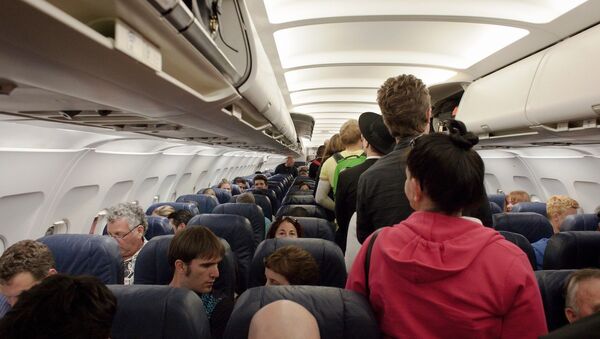Two days after returning to Toronto from a hiking trip to Argentina, 64-year-old Savage went to doctors complaining of intense pain in his lower back. He was diagnosed with deep-vein thrombosis, after being confined to his seat for a turbulent 10-hour flight, and he was almost killed by blood clots that moved from his legs to his lungs.
Savage said that he wants Air Canada to "take a good hard look at what they're doing."
The airline stated that the risks for such injuries are no higher for air travel than they are by traveling by car, bus or train, and that the World Health Organization "have advised there is no risk with air travel for healthy passengers."
The WHO states that, “it is known that immobility is one of the factors that may lead to the development of a blood clot in a deep vein – so-called “deep vein thrombosis (DVT). Research has shown that DVT can occur as a result of prolonged immobility, for instance during long-distance travel, whether by car, bus, train or air."
The organization is planning to do additional research into whether air travel increases the risk for DVT, adding, "The findings of the epidemiological studies indicate that the risk of venous thromboembolism is increased 2- to 3-fold after long-haul flights (more than 4 hours)."
The Center for Disease control has made similar findings.
"Blood clots can form in the deep veins (veins below the surface that are not visible through the skin) of your legs during travel because you are sitting still in a confined space for long periods of time. The longer you are immobile, the greater is your risk of developing a blood clot. Many times the blood clot will dissolve on its own. However, a serious health problem can occur when a part of the blood clot breaks off and travels to the lungs causing a blockage. This is called a pulmonary embolism, and it may be fatal."
In 2010, a 36-year-old American passenger on a transatlantic flight took a sleeping pill just before take off. She awoke after 7 hours to use the bathroom but collapsed in the aisle. Two hours later, the flight made an emergency landing in Boston and it was discovered the woman had suffered a pulmonary embolism with blood clots traveling from her legs to her heart and lungs. The woman suffered brain damage, lapsed into a coma and has never recovered.






